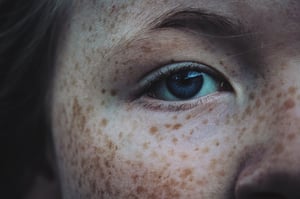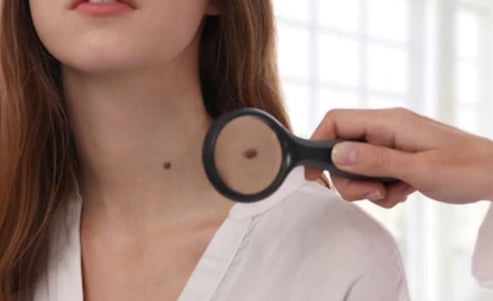Everything you need to know about growing new moles after 30

We are often told that a new or changing mole raises alarm bells for skin cancer. In actuality, it’s very common for people to acquire and lose moles over the course of their lifetime. Most moles are not present at birth but develop from around the second year of life until we reach middle age. Around one per cent of babies are born with a congenital neavus (more commonly known as a birth mark) but the majority of moles don't form until our later childhood and early adulthood. A brand new mole in an adult aged 30+ may be a sign of an evolving melanoma.
We can still develop new moles in our 30s and 40s, but the older we get, the rarer and more suspicious new moles become. Most people do not develop new regular moles after 30. Other growths in adulthood such as freckles, lentigines, liver spots, and seborrheic keratoses are common, and these - in addition to any new moles appearing on our skin after we reach 30 - require close observation, medical evaluation and possible biopsy.

You should get your whole skin surface checked by your doctor every 12 months, or more frequently if you are at high risk of skin cancer, regardless of whether you have seen changes in your skin.
Self-monitoring for skin cancer becomes more important after you turn 30, because mole accumulation usually peaks around age 35 and begins to decline with time. Find out how to self-monitor your moles here, but keep in mind that while self-checks help to detect skin cancer, they should not replace a professional skin check.
A new mole in an elderly person should raise immediate suspicion, as most spots and freckles have completely faded by the time we reach our senior years. Similarly, a new mole that stands out from the rest in a young person should be checked for symptoms of skin cancer too, since melanoma is the most common type of cancer in Australians aged 15 to 39.
What signs should you be looking for? Find out here.
We acquire most of our sun damage (the leading cause of skin cancer) during childhood but often don't see the effects of this damage (such as wrinkles and skin tumours) until our later years. Even though sun damage is irreparable, you can still take measures now to prevent further harm to your skin and reduce your risk of developing skin cancer. It's important to wear sunscreen every day and reapply as directed, stick to the shade whenever possible, and put on sun-protective clothing if you must go outdoors. Check the UV rating before you head outside and avoid direct sun exposure between the peak hours of 10am and 4pm.
If you do find a mole on your skin that has changed in size, shape or colour, or has started to crust or bleed, see your doctor straight away, regardless of how long you've had that mole.
- Tags:
- Risks
- Detection
- Prevention
